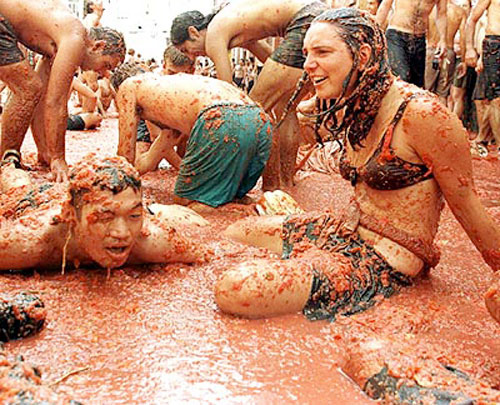ONLY BE VALENCIAN
Only-Be Valencian
Radio City Valencia
Radio City Valencia is something more than a nightlife place. It´s more like an authentic location of art.
Crazy Rhythm Festival in Valencia
Crazy Rhythm is a festival which is entirely dedicated to rock music.
Franco Fontana in Valencia
Franco Fontana was born in Modena, Italy, in 1933, and he´s famous around the world for making captures where the intense colours saturate over beautiful naked women and landscapes which are, above all, related with the abstract style of his photography. All of his captures are manipulating working with colour, saturating it, modifying it, giving it a different shine and contrast. This means that simple and common photographs of landscapes end up being abstract works of art. On this occasion, the Instituto Valenciano de Arte Moderno (the Valencian Institute of Modern Art also known as IVAM), one of the most important museums in the whole of Spain, will present the exhibition ´Franco Fontana: The light of the landscape´, which is a retrospective exhibition which will be made up of 139 photographs (30 Polaroid ones and 109 conventional ones). In it you can enjoy his career which has been improving for over 50 years. In Fontana´s work, the Polaroid cameras were used to make some of his most famous, impressive and relevant photographs in which you can see natural landscapes like the sea and elements of nature in general. In many others, Valencia is the protagonist of his captures and the most beautiful corners of the city are shown in his work. Fontana has a magical and unique vision of photography. He thinks that through it you can discover a reality full of suggestion, mystery and fantasy, and that the photographs should make the invisible become visible. Fontana is one of the most famous photographers who still works taking photographs in different parts of the world through which he shows...General Motorcycling Grand Prix in Valencia
The Generali Motorcyling Grand Prix is an event for all speed lovers.
Parque de Gulliver in Valencia
Parque de Gulliver is a perfect tourist attraction for families.
Valencia Bikes in Valencia
Rent a bicycle at Valencia Bike: the best way to tour around the city.
MUVIM; Museum of Illustration and Modernity
This is a bizarre and wondrous attraction. Who dreamed up the idea of a Disneyesque interactive exhibit all about the rise of rationalism in 18th century Europe? I suspect only a socialist and atheistic government would fund something like this. (It’s quite pointedly anti-church.) The actual name of the place is Museo de Illustracion y Modernidad (MUVIM) in Spanish. It’s a striking modernist building in the heart of Valencia, designed by Seville architect Guillermo Vázquez Consuegra. The Museum of the Age of Enlightenment is only one possible translation. Illustracion means both enlightenment and illustration, and in fact the building is a museum of illustration and graphic arts as well as of the Enlightenment. The Disneyesque self-guided tour through electronic displays about the European Enlightenment is housed on the upper floor of the fortress like building. You can’t just walk in. You have to book ahead. (See contact information at bottom.) It seems to have been designed with big crowds in mind. Many of the rooms are huge, with very little in them. But when we visited for an English-language version of the tour – it’s repeated at different times in three other languages: Spanish, Valencian, French – there were only three of us. We were greeted by a silent guide in monk’s habit who shepherded us through the first few rooms that cover the lead-up to the Age of Englightenment. None of the human guides we encountered spoke. All the sound comes from hidden speakers in each room. The museum includes lots of large-scale reproductions of portraits of famous figures from history. There are light shows, ramps seemingly arbitrarily leading...Noël Ribes Valencia
Noël Ribes is an antiques shop where you´ll be able to find items that date from the middle ages until the 20th century. Visiting it is a must.

 English
English Français
Français Deutsch
Deutsch Italiano
Italiano Español
Español




